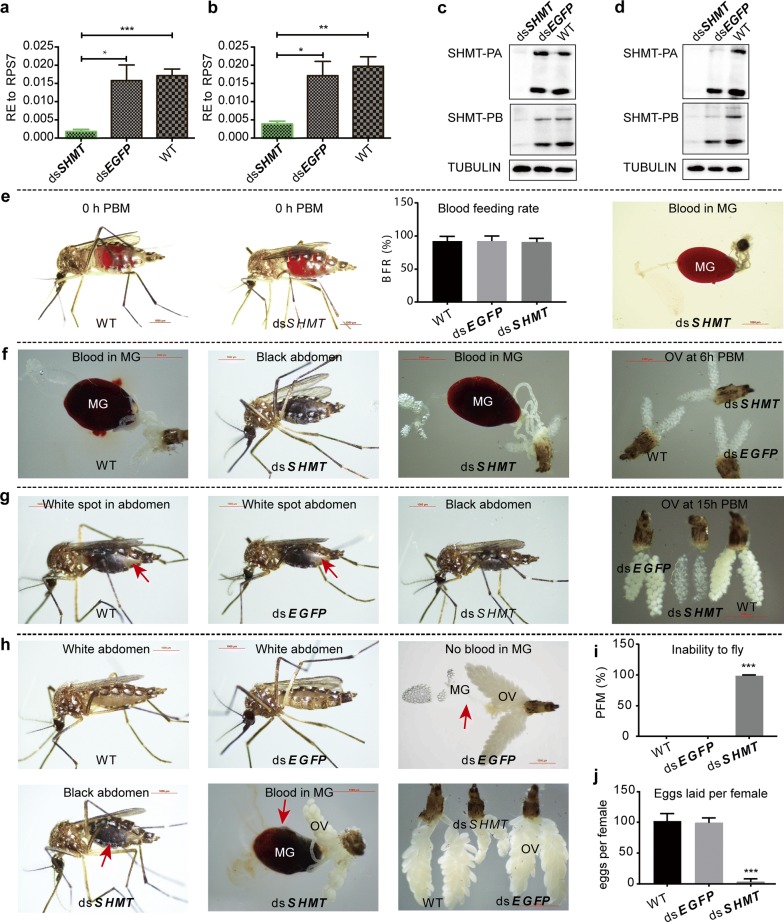Fig. 3.
Abnormal phenotypes caused by SHMT depletion. a qRT-PCR results showing RNAi of SHMT at 72 h PE. b qRT-PCR results showing RNAi of SHMT at 24 h PBM. c Western blotting analysis of SHMT RNAi at 72 h PE. d Western blotting analysis of SHMT RNAi at 24 h PBM. e RNAi of SHMT exerted no effect on blood-feeding. Blood meal was given at 3 d post-injection (PIJ) The wild-type, dsEGFP-injected and dsSHMT-injected mosquitoes normally sucked the blood which directly entered the midgut. f Phenotypes observed at 6 h PBM. The mosquitoes were dissected at 6 h PBM, showing the blood in the midguts of wild-type and dsSHMT samples as well as the ovaries of wild-type, dsEGFP and dsSHMT mosquitoes. g Phenotypes observed at 15 h PBM. A white spot appeared at the back of the abdomen for the wild-type and dsEGFP samples but the whole abdomen of dsSHMT was black. The red arrow shows the white spot in abdomens and growing ovaries. The ovaries are compared between wild-type, dsEGFP and dsSHMT mosquitoes at 15 h PBM, showing the developmentally delayed eggs in dsSHMT. h Phenotypes observed at 48 h PBM. The abdomens of wild-type and dsEGFP mosquitoes were all white. The wild-type and dsEGFP mosquitoes had no blood in their midguts and the ovaries developed normally. However, the abdomens of SHMT-depleted mosquitoes were still black in appearance and had undigested blood in the midgut. Ovaries of WT, dsEGFP and dsSHMT are compared at 48 h PBM, showing that the ovaries of dsSHMT were underdeveloped. i The proportion of flightless mosquitoes (PFM). j Number of eggs laid per female. The data are shown as the mean ± SEM. Abbreviations: dsSHMT, double-stranded RNA of SHMT; dsEGFP, double-stranded RNA of EGFP; PBM, post-blood-meal; WT, wild-type; MG, midgut; OV, ovary; BFR, blood-feeding rate; PFM, proportion of flightless mosquitoes. ***P < 0.001

